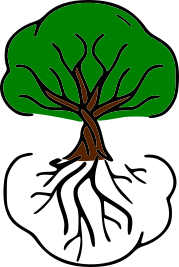In Literature Appetizer, Ben gives you just a taste of a book. Not meant to replace the full meal, this is meant to whet your appetite. Bon appetit!
Growing up in Western Pennsylvania, I was told that the “Indians used to live here, but now they don’t. There was some fighting but not a lot.” I never seriously questioned the history I was told until I went to the North Cascades. One of my cohort mates belonged to a federally recognized tribe and started to show me how lacking my education was.
I learned more history of my country from An Indigenous Peoples’ History of the United States by Roxanne Dunbar-Ortiz than I learned throughout my 14 years in public education. While I think it is a great book for folks around the world to read, I fully believe this should be required reading for all American students in our Public School system.
Specifically I want to touch on the Ulster-Scots and genocide.
Thunderbird Outfit from the Salish people housed in the Museum of History in Edinburgh, Scotland.
Ulster-Scots
Growing up I was always told I had a mix of “German and Scots-Irish” heritage. I never thought anything of it and never looked into what makes Scots-Irish different than Scottish or Irish. So what makes Scots-Irish unique? Colonialism.
“Britain’s colonization of Indigenous lands in North America was foreshadowed by its colonization of northern Ireland. By 1630 the new settlers in Ulster —- 21,000 Britons, including some Welsh and 150,000 Lowland Scots —- were more numerous than British settlers in all of North America at the time. In 1641, the indigenous Irish rebelled and killed ten thousand of the settlers, yet Protestant Scots settlers continued to pour in.”
The core value of the British Empire was colonialization. It didn’t matter who or where, they wanted to expand at any cost. Most likely my ancestors were some of these settlers in Ireland. But they didn’t stop there.
“Before ever meeting Indigenous Americans, the Ulster settlers had perfected scalping for bounty, using indigenous Irish as their victims...the Scots-Irish were the foot soldiers of British empire building...””
While many who came to America were escaping the authority of the crown, they used the same techniques to take land, resources, and the lives of indigenous Americans. I had always imagined my ancestors to these mountains of Appalachia were just escaping oppression. That story is a helpful tool to think “this was an empty and open land” rather than filled with thousands of peoples in hundreds of cultures.
Genocide
Let’s take a look at the UN’s five acts of Genocide:
Killing members of the group
Causing them serious bodily or mental harm
Imposing living conditions intended to destroy the group
Preventing births
Forcibly transferring children out of the group
Each one of these both the United States Military and settlers have done to acquire land and gain resources at the expense of indigenous Americans. While there are countless atrocities committed over the past 400 years, there is one I want to highlight here.
For context, in 1933 there was an effort by the United States government to open up prime grazing land for Anglo settler ranchers. When the Navajo wouldn’t give up their land, the military stepped in.
“With traumatized Navajos watching, government agents shot sheep and goats and left them to rot or cremated them after dousing them with gasoline...One hundred fifty thousand goats and fifty thousand sheep were killed in this manner.”
This of course impacted the livelihood of the Navajo people, but was just another atrocity committed by the United States. Despite all that has been done, the fact that there are any indigenous people in America shows their resourcefulness and power through resistance.
I hope more people in America are able to read this book to get a clearer picture of our actual history.


